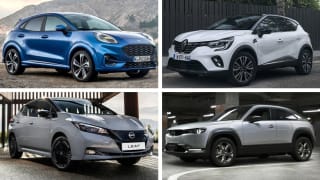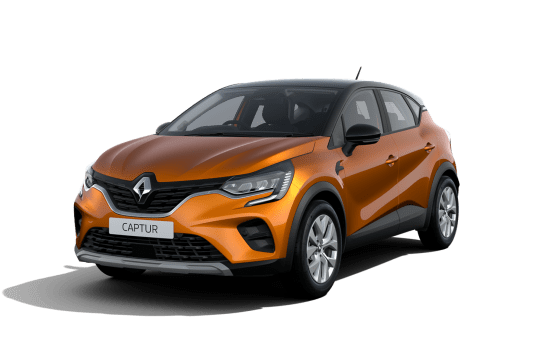
What's on this page
Renault Captur 2023
Carsguide Contributing Journalist Byron Mathioudakis had this to say at the time: There’s no denying the Captur RS Line is expensive. But it’s also sophisticated, cultured, comfy, friendly and fun, possessing a quality and capability normally expected – but rarely delivered as roundly – in more premium-branded small SUVs. Seen in this light, the Renault’s value is relative.
You can read the full review here.This is what Byron Mathioudakis liked most about this particular version of the Renault Captur: Appealing design, Premium cabin, Invigorating driving experience
The 2023 Renault Captur carries a braked towing capacity of up to 1200 Kg, but check to ensure this applies to the configuration you're considering.
The Renault Captur is also known as the Renault Samsung QM3 (South Korea) in markets outside Australia.
Renault Captur 2023 Price and Specs
Pricing guides

| Renault Captur Model | Body Type | Specs | Price from | Price to | |
|---|---|---|---|---|---|
| Intens | SUV | 1.3L — 7 SP AUTO | $35,860 | $42,680 | |
| Intens | SUV | 1.3L PULP 7 SP AUTO | $35,530 | $42,240 | |
| Life | SUV | 1.3L — 7 SP AUTO | $29,590 | $35,640 | |
| Life | SUV | 1.3L PULP 7 SP AUTO | $28,710 | $34,650 | |
Renault Captur 2023 Q&As
Check out real-world situations relating to the Renault Captur here, particularly what our experts have to say about them.
-
I have a 2015 Renault Captur. The transmission has recently failed, should the repairs be covered by Renault?
If there was a problem with the car that was logged with Renault while the vehicle was still covered by the factory warranty, then conventional wisdom says it’s Renault’s problem to put right. That’s what’s called a pre-existing fault and even though the car may now be out of warranty, if the problem was there before the warranty ran out, it’s still a warranty claim.
However, what would help your case no end would be independent proof that the problems you experienced in warranty were the same ones that ultimately caused the entire transmission to fail. Perhaps having the transmission inspected by a specialist would give you this information.
The issue will be that this transmission, in many cases, exhibited jerky performance even when it was brand-new. It’s likely Renault would point to this and tell you “they all do that,” suggesting that what you complained about back in warranty days was nothing to do with the failure. But you never know, Renault may wish to admit that this gearbox has known faults and flaws and look after you on the basis of customer care. Certainly, there are plenty of other Renault owners out there with similar stories to tell. Clutch-packs and the dual-mass flywheel have all been found to be wanting in this transmission.
Show more -
What small SUV do you recommend?
It sounds like you have a bit of a thing for French cars right now, Carmel. In fact, you could argue that the French brands are experiencing a bit of a resurgence in Australia, particularly as each brand gets its quality act closer to the mark and the factory warranties have never been better than right now.
All three of the cars you’ve nominated have their strong points, and it will really come down to your personal preferences when it comes to which one is right for you. And let me guess; it was the Peugeot 2008’s odd dashboard/steering wheel relationship that put you off. That’s particularly true for shorter folk who have trouble looking over the wheel at the instruments. But then, such quirkiness has always been part of the charm of French cars, no?
In any case, it would also be wise to sample the Japanese and South Korean contenders at this end of the market, too, as there are some interesting offerings there as well. The Toyota C-HR would be one, the Honda HR-V another. Don’t forget, either, the Hyundai Kona, Nissan Juke and the Mazda CX-3. All have their strengths and weaknesses, but all are worth short-listing.
As for the MX-5, it’s true that Mazda has stuck to the original formula for the new latest little convertible. And, yes, that dictates a small, low car that is huge fun to drive but isn’t for everybody physically.
Show more -
Toyota Aurion: What car is more comfortable?
It's hard to recommend a car that would suit you without knowing more about what you want to do with it, but I would suggest you avoid sporty models, low-profile tyres, and consider an SUV such as a Mitsubishi ASX, Nissan Qashqai, or Renault Captur.
Show more -
Renault Captur 2015: How much oil should my car be using?
A software upgrade will not affect the oil usage of the car. It was once considered abnormal for a car to use oil, but it’s not today, and many engines consume some oil. It’s important to check the oil level in the engine regularly and top it up when it’s needed. The rate of oil used on the dealer’s test would seem to be reasonable.
Show more
Renault Captur 2023 Dimensions
Dimensions for the 2023 Renault Captur are dependent on which body type is chosen. The maximum width and height is 1797mm x 1576mm and can vary on the basis of model.

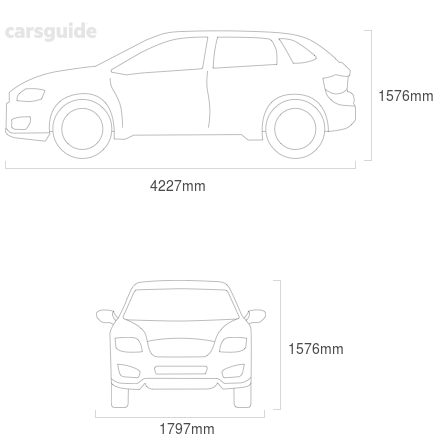
| Renault Captur Model | Body Type | Height x Width x Length | Ground Clearance | |
|---|---|---|---|---|
| Life | SUV | 1567x1797x4227 mm | 165 mm | |
| ZEN | SUV | 1567x1797x4227 mm | 165 mm | |
| Intens | SUV | 1576x1797x4227 mm | 165 mm | |
| R.s. Line | SUV | 1576x1797x4227 mm | 165 mm | |
Renault Captur 2023 Fuel consumption
Fuel consumption for the 2023 Renault Captur is dependent on the type of engine, transmission, or model chosen. The Renault Captur currently offers fuel consumption from 6.6 to 6.6L/100km. The Renault Captur is available with the following fuel types: — and PULP.
| Renault Captur Model | Body Type | Specs | Fuel Consumption | |
|---|---|---|---|---|
| Intens | SUV | 1.3L,—,7 SP AUTO | 6.6L/100km | |
| Intens | SUV | 1.3L,PULP,7 SP AUTO | 6.6L/100km | |
| Life | SUV | 1.3L,—,7 SP AUTO | 6.6L/100km | |
| Life | SUV | 1.3L,PULP,7 SP AUTO | 6.6L/100km | |
Renault Captur 2023 Wheel size
Wheel size for the 2023 Renault Captur will vary depending on model chosen, although keep in mind that many manufacturers offer alternate wheel sizes as options on many models.The wheel size available will alter the range of tyres available to be fitted.
| Renault Captur Model | Body Type | Front Tyre Size | Front Rim | Rear Tyre Size | Rear Rim | |
|---|---|---|---|---|---|---|
| Life | SUV | 215x60 R17 | — | 215x60 R17 | — | |
| ZEN | SUV | 215x60 R17 | — | 215x60 R17 | — | |
| Intens | SUV | 215x55 R18 | — | 215x55 R18 | — | |
| R.s. Line | SUV | 215x55 R18 | — | 215x55 R18 | — | |
Renault Captur 2023 Towing capacity
The Renault Captur has maximum towing capacity of 1200kg. Some models also offer heavy-duty or towing option packs which can increase towing capacity, as well as options which can hamper towing capacity. Towing capacities can vary wildly on a large number of factors. These include engine, transmission, model, and options chosen. Always check with the manufacturer or in your vehicles handbook before attempting to tow anything.
| Renault Captur Model | Body Type | Specs | Braked Capacity | |
|---|---|---|---|---|
| Life | SUV | 1.3L,PULP,7 SP AUTO | 1200kg | |
| Life | SUV | 1.3L,—,7 SP AUTO | 1200kg | |
| ZEN | SUV | 1.3L,PULP,7 SP AUTO | 1200kg | |
| ZEN | SUV | 1.3L,—,7 SP AUTO | 1200kg | |
Renault Captur 2023 News
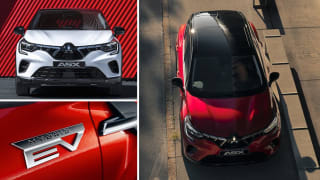
Don't order that Mazda CX-3 just yet: Shock Mitsubishi ASX replacement announcement for Australia 'imminent'
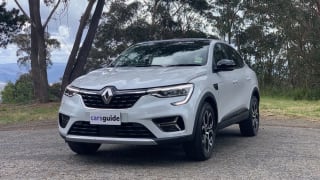
Price rises alert! 2023 Renault Megane RS, Captur, Arkana and Master pricing increases detailed
